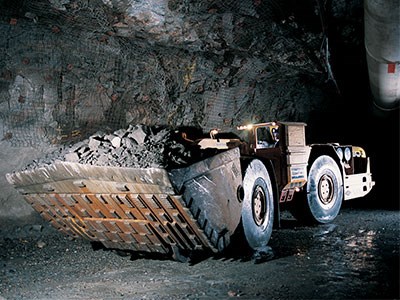The Ultra-Deep Mining Network in Sudbury received 62 proposals from researchers and mining supply and services companies to bring forward any ideas that would improve ultra-deep mining productivity or safety to reality.
The Centre for Excellence in Mining Innovation (CEMI) launched the Ultra-Deep Mining Network to find practical advances that would make ultra-deep mining — deeper than 2.5 kilometres or roughly 8,000 feet — more economically viable.
Thanks to contributions from the federal government and mining sector, the network has $46 million to apply to research over a five-year period.
Bora Ugurgel, managing director of the Ultra-Deep Mining Network, said most proposals were from mining supply and services companies, while around 10 per cent were from academics.
The network has identified four areas of research that would benefit mining at extreme depths: rock stress reduction; energy reduction; material transport and productivity; and improved human health.
Ugurgel said many mining suppliers already have innovative ideas they've never had the chance to test or develop due to a lack of time or resources to pursue research.
“They might already have the idea we're looking for,” he said.
Developing technologies to mine very deep underground in an economical and safe fashion is more important than ever before, said Ugurgel.
“Either we go deeper in existing ore bodies, or we find new ore bodies,” he said.
In the Sudbury basin, he added, extracting deeper ore bodies seems to be the most likely way to continue mining operations in the near term.
If a Sudbury mine closes, Urgurgel said, it can cost the city 300 to 400 direct jobs at the mine, and many more indirect jobs through the city’s supply and services cluster.
The two largest mining companies in Sudbury, Vale and Glencore, have already discussed plans to extend some of their mines' lifespans by going past the 2.5-kilometre mark.
In January 2014, Samantha Espley, general manager of mines and mills technical services with Vale's Ontario operations, said the company wants to reach three kilometres in depth, or nearly 10,000 feet, at Sudbury's Creighton Mine within the next decade.
Creighton Mine is currently under its Phase 3 expansion, which includes the extension of the primary access ramp from 7,940 feet to 8,200 feet and the creation of three main production levels to access additional ore bodies.
Glencore is completing a pre-feasibility study for its Onaping Mine, which would descend 2,700 metres. The company is also exploring a potential expansion of its flagship Nickel Rim Mine, which would also go as deep as 2,700 metres.
While other mining jurisdictions, such as South Africa, have ultra-deep mines, Ugurgel said the rules and regulations in other countries differ so much from those locally, that their best practices for mining beyond 2.5 kilometres cannot be applied in Northern Ontario.
For the health of miners underground, he said, mining companies will need to come up with more effective ways to handle temperatures that can get as high as 45 C at extreme depths.
“Is there a way we can cool that individual instead of trying to cool the whole drift?” Ugurgel said.
As mines get deeper, there is also much greater stress on the rock surrounding the drifts. New ways to reduce rock stress can make mines safer, and avoid catastrophic rock bursts.
From a cost-saving perspective, developing techniques to advance underground more quickly can make deep mining projects — where costs increase with every added metre of depth — more viable.
A new retractable steel canopy developed by CEMI, for example, should allow mining contractors to almost double the speed at which they create underground tunnels.
Douglas Morrison, CEMI's president, said mine tunnelling is usually done in four steps.
The first is to remove broken and blasted rock.
The second step is to install ground support to ensure the tunnel is safe for the miners.
The third step is to drill face holes into the heading, for explosives.
And the final step is to bring in a piece of equipment that charges the holes with explosives.
Over a 16-hour day, the sequence results in a rate of advancement of around 3.5 to four metres.
“What the canopy does, is it allows us to do the ground support, the drilling of the face and the charging at the face all at the same time, underneath the protection of the canopy,” Morrison said.
Early tests have shown the canopy reduces the time needed to advance up to four metres, from 16 hours to 10 hours.
Urgurgel said he expects the Ultra-Deep Mining Network to come up with similar solutions through applied research projects that can be commercialized in a short amount of time.
“We're very excited for this,” he said.




